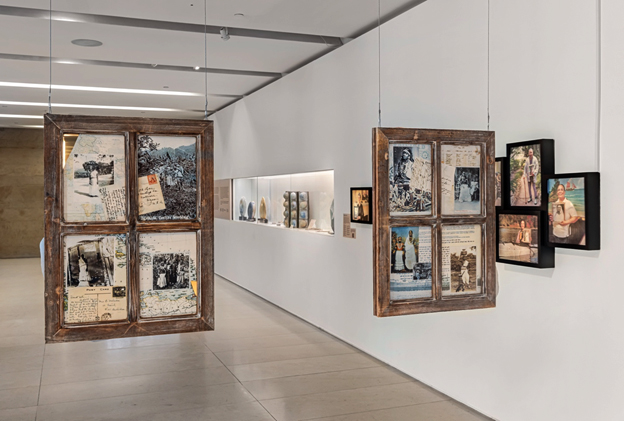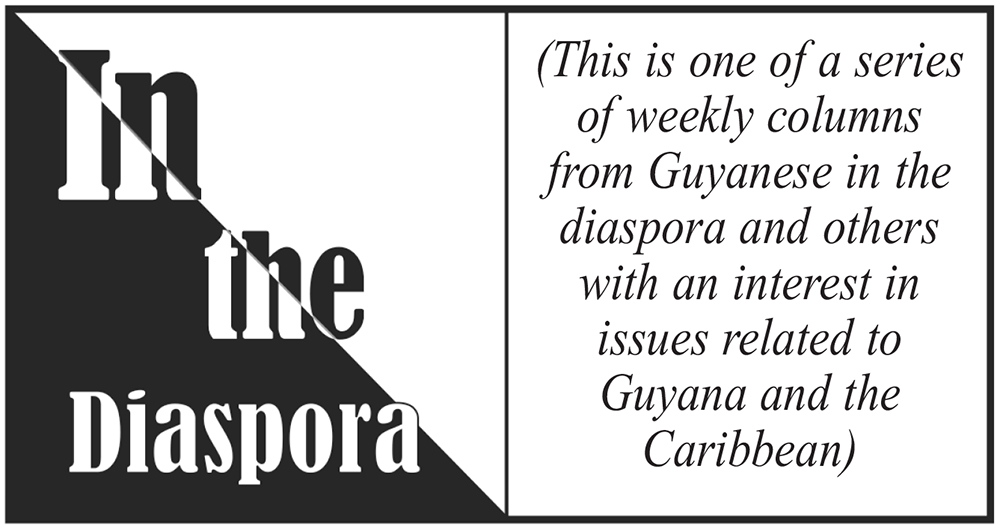By Heidi McKenzie
Heidi McKenzie is a Toronto-based ceramic artist. Heidi completed her MFA at OCADU in 2014. In 2022, Heidi was a Shantz Award finalist for Canada’s emerging ceramicists. Heidi has exhibited internationally in Europe, Scandinavia and the US. The recipient of numerous grants, Heidi has created in Denmark, Hungary, Australia, China, Ireland, and Indonesia.
Heidi uses photography, digital media, and archive to forefront themes of ancestry, race, migration and colonization. Heidi curated ‘Decolonizing Clay’ at the Australian Ceramics Triennale, 2019, and participated in the World Indian Diaspora Congress in Trinidad, 2020. Heidi was inducted into the International Academy of Ceramics in 2022.

In March of 2022, Sequoia Miller, the Chief Curator of the Gardiner Museum in Toronto, offered me the opportunity to tell the little-known stories of Indo-Caribbean peoples and ancestors in a solo exhibition in the main floor exhibition space of Canada’s premier ceramics gallery. Arriving at Reclaimed: Indo-Caribbean HerStories that opened at the Gardiner Museum on May 4th, and is on view until August 27th, has been a challenging yet ultimately rewarding journey.
I began telling the stories of my parents’ lives together and ultimately those of their ancestors through photography on porcelain in 2017, shortly after I spent three months in Sydney, Australia on an artist residency. I had gone to apprentice with master Mitsuo Shoji. I learned his particular Japanese technique of building hollow forms with hand rolled coils of clay. I wanted to transmute the minimalist modern forms of Henry Moore and Barbara Hepworth, to bring these sculptures to diverse audiences that might find a reflection of themselves in the negative spaces. Early on in the residency I connected with the cultural attaché from the Canadian Consulate in Sydney. She offered me the opportunity to travel into the interior and spend time with Indigenous ceramic artists of Hermannsburg. I flew to Alice Springs, did a five-day sleep under the stars and hiking the outback tour, then drove an hour and a half to Hermannsburg.
The relatively small collective of Indigenous women ceramic artists were painting their stories onto hand-coiled pots. In the space of a day, my worldview shifted. I knew I needed to tell the stories of my father’s ancestors, the Indian indentured labourers who came by ship between 1838 and 1917 to replace/displace enslaved Africans to work the cash crops, sugar, cocoa, coffee. The British had abolished slavery in 1834, and so, after trying the Scots, Portuguese and Chinese – it was decided that the Indians, a largely vegetarian peoples, for whom Canadian grains could be sourced from the Empire, were a replacement labourforce that could be controlled through indentured contracts. They were paid mere shillings a day, and signed five-year contracts. Some returned home after the hardship, others accepted land and made Trinidad, Guyana, Jamaica, Surinam and other spaces their home.
Reclaimed: Indo-Caribbean HerStories is a mixed-media, ceramic-based exhibition that illuminates the courage and strength of Indo-Caribbean women, past and present. Through a feminist lens, the installations narrate the little-known histories of Indo-indentureship through to the women of today, using photographic portraiture on ceramics, both archival and contemporary, and draws in the visual narrative of Indo-indentured jewelry as symbolic of power and resistance. It is an act of reclamation and decolonization.
There are three main installation components to the exhibition: Holding Ancestry, a wall-mounted set of contemporary portraits on porcelain, lit from behind, depicting contemporary Indo-Caribbean women holding a matrilineal ancestral photograph that is accompanied by short video portraits of each photograph; Looking Back, two hanging window frames that showcase photography and ephemera scrapbook-style of “Coolie Belles” on porcelain tiles inspired by early 20th century postcards; and a set of three abstract sculptures, Coinage, Bangle, and Crescent Moon, that respond to the photographic work, amidst select pieces of the Indo-indentureship silver jewelry.
When I came across the image of my great great grandmother, Roonia, photographed at age 103, my imagination and curiosity were set ablaze. Roonia sailed from Calcutta to Guyana in 1864 and worked the sugar cane fields, a Hindu woman who married and raised four children on the Springlands plantation in Guyana near Suriname. One of her sons left Guyana after the family converted to Islam. My great grandfather, Jadoo, took the name James McKenzie.
Gaiutra Bahadur’s Coolie Woman: The Odyssey of Indenture was my first portal into my research. I also re-read Canadian Indo-Trinidadian, essayist, novelist, poet and academic Ramabai Espinet’s novel Swinging Bridge. Both texts provided the backdrop to a visionary landscape. I found that only five to twenty percent of each shipload of indentured labourers from India were women. Surprisingly, they were predominantly single, widowed, prostitutes or otherwise marginalized. They inhabited the very huts previously occupied by the enslaved Africans whom they displaced. I learned that indentured workers, “Coolies”, are sometimes referred to as “the new slaves” due to the harsh and abusive conditions they endured. The photographs of the women from this time are known as “Coolie Belles”.
The Coolie Belle photographs were used as postcards and commodified for Western tourists at the turn of the last century. Photographers exoticised the women. They were photographed in studios with sets, backdrops, often dressed with additional jewelry, to give the illusion of erasing any of the hardships of the plantation.
I met and befriended York University professor Amar Wahab in late 2019, who generously lent me his albums of Caribbean period postcards, many of which are stunning examples of original Coolie Belles. Around the same time, the Art Gallery of Ontario (AGO) had acquired the Montgomery Collection of Caribbean Photographs. I later had the opportunity to research the Coolie Belles at the AGO, and ultimately use these images to tell the stories of Indo-indentured women.
Archival studio photography from the late nineteenth and early twentieth centuries documents these women, showing them bedecked with ornate, layered jewellery. The women were most often illiterate, and therefore had no way to access the local bank system. They earned one, three or five British silver shillings per day – if they met their daily quota. These quotas often exacted the hard labour of cutting two tons of sugar cane in a ten-hour work day. The women then had local silversmiths, also Indo-indentured workers, fashion jewelry out of their earnings. They wore their banks on their bodies, heavy bangles, necklaces, nose rings, earrings, arm bands and foot bracelets. In the Caribbean visual imaginary, Professor Joy Mahabir’s seminal work emphasises how Indo-Caribbean jewelry is understood as symbolic of female resistance, independence, and courage. As visual narrative it underscores the struggles undertaken by women on and off the estate. Mahabir’s research and writing point to the fact that the women formed the backbone of the resistance movement to overcome poor working/living conditions and paved the way for unionization in the 1960’s and 1970’s. It is impossible to “feel” the living energy of these rare pieces, which are more than artifact, but cultural memory, unless seen in person. I am honoured to have extremely rare access to a collection of these few remaining pieces. Through Ramabai Espinet, I contacted Guyanese born/raised, Canadian Lancelyn Rayman-Watters. Rayman-Watters’ mother, Evelyne Rayman (1915-2010) had the foresight and interest to collect and save a number of pieces of the silver Indo-indentured jewelry during the 1950’s and 1960’s – at a time when it was considered peasant jewelry, and undesirable. Much of the jewelry from indentured times was melted down and sold. Most of Rayman’s considerable collection was destroyed by fire during the racial disturbances which convulsed Georgetown in 1962, however some of it was off-site at the time of the fire, and was saved and handed down to Rayman-Watters, who graciously lent selected pieces for exhibition at the Gardiner Museum.
Looking Back is a set of two photography-based hanging installations. The Coolie Belle photographs were carefully hand processed by colonial photographers using an albumen process with silver nitrate on glass plates. Exposure to light created the image on the glass. My process of transferring images to hand-made ceramic tiles, involves photoshopping digital images, having them printed with special printers that have coloured glaze pigments in lieu of ink cartridges in the CMKY spectrum. These images were then soaked in water and applied to the pre-fired porcelain. They are then refired at lower temperatures, in effect “glazing” the photographs onto both sides of the porcelain panes.
It was crucial for me to give voice through portraiture to us, we, the descendants of the “coolie women,” to reclaim our herstories. I had envisioned and subsequently realised a wall-mounted constellation of staggered depth porcelain-paned light boxes, with full colour photographs (in ceramic pigments) of contemporary Canadian Indo-Caribbean women, fired onto large porcelain tiles. The tiles ended up being 11.5” x 15”, the maximum size I could fire in my kiln. I had originally planned to procure pre-fabricated translucent porcelain tiles from China, however, when they arrived, they were twice as thick as promised, and completely opaque. In the last two months, I had to overcome a number of technical challenges and hand-roll my own porcelain tiles. Porcelain shrinks, on average twenty percent. Making and then transferring to kiln shelf 13” x 17.5” porcelain tiles, and then successfully firing them without breakage was a process of trial and error. With crowd-sourced tech support and advice, I succeeded in producing the required 3mm thick translucent porcelain tiles that I used as the canvas for the lightboxes.
The research and identification of the photographees for the project led me to a diverse group of ten women who represent a broad spectrum of occupations, age range, religious backgrounds, and positions within the diaspora (first, second generation, from Trinidad, Guyana and Jamaica). I asked each woman photographed to hold a portrait of a matrilineal ancestor (grand-mother, great-great-grandmother, great-aunt, etc.) All of the women are local to the Greater Toronto Area so that I was able to photograph them myself. I included a portrait of myself holding a portrait of my great-great grandmother, Roonia.
Each woman was invited to choose their setting, dress, and pose. I invited each woman to wear or show a piece of their own family or contemporary jewelry. Each claimed their voice and space. As a female descendant of Indo-Caribbean indentured workers, I felt strongly that it was important for me to take the photographs and establish a rapport with each woman. These conditions and criteria are in sharp contrast to the erasure of individuality in the “Coolie Belles” portraits.
It was crucial for me to give voice, both literally and metaphorically, to these women. Part of the installation are video portraits that are 2-3 minute clips of each participant recounting a short narrative about where they came from, who they have become, and an anecdote or memory about their chosen ancestor. The journey of working with these women and of making this work has opened my mind and my creative path to future investigation.
For more information on my work and the exhibition, and to access the QR code to view the videos, please visit: www.heidimckenzie.ca

